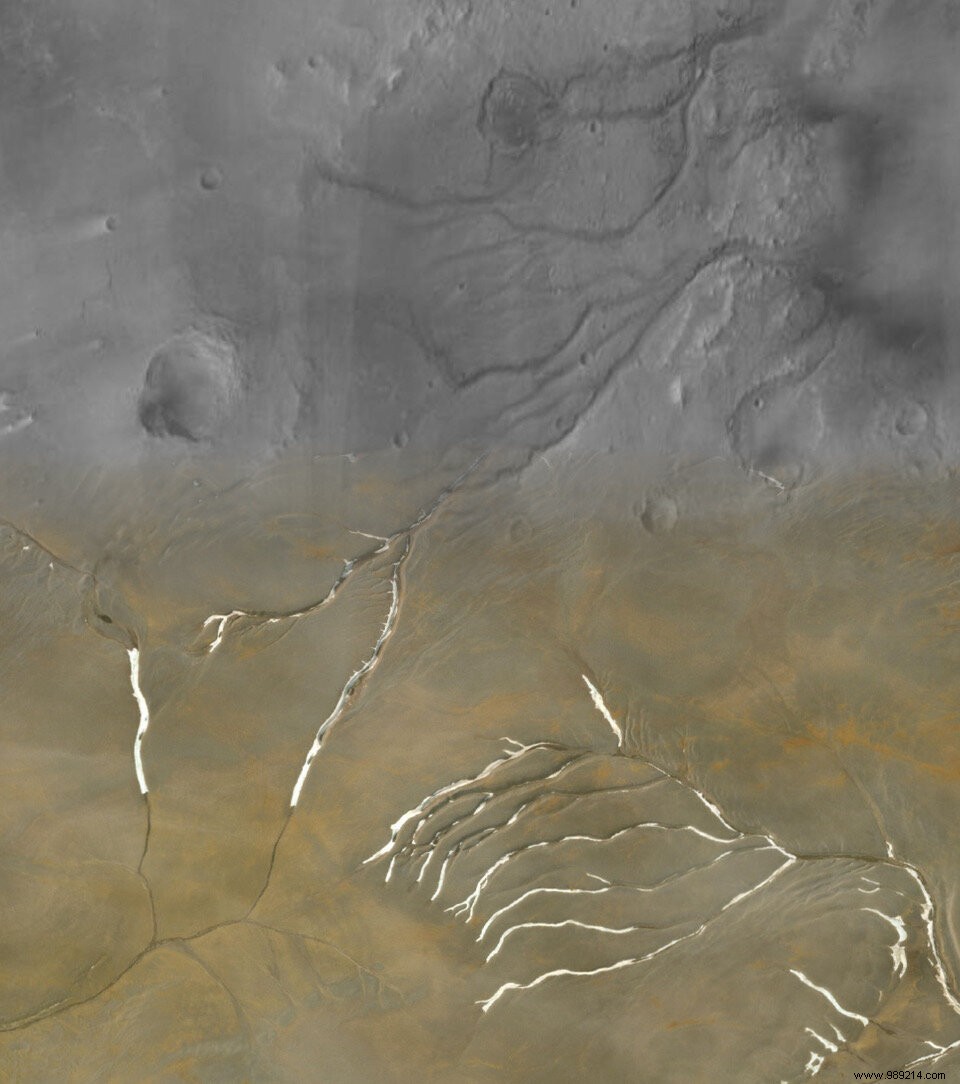On Mars, many valleys were carved by melting subglacial water, not free-flowing rivers as previously thought, according to a study published on Monday.
Since the discovery of thousands of Martian valleys decades ago, the prevailing assumption has been that all of these structures were carved out by free-flowing water. It was indeed widely believed that the Red Planet was once lined with lakes and rivers.
What if we were wrong? Just like our planet, Mars indeed has multiple scars which, according to new research published in the journal Nature Geoscience , could have formed in different ways.
“If you look at the Earth from a satellite, you see many valleys:some are carved out by rivers, some by glaciers, some by other processes, and each type has a distinct form , explains Grau Galofre, the main author of this work. Mars is similar, in that the valleys look very different from each other, suggesting that many processes were at play to sculpt them “.
As part of this study, Grau Galofre and his team analyzed, via an algorithm, more than 10,000 Martian valleys , highlighting, for some, a similarity with the subglacial channels of Devon Island, in the Canadian territory of Nunavut . In other words, their algorithm determined that most of these Martian valleys had been sculpted in the same way as those of the Canadian Arctic.
“These results are the first evidence of extensive subglacial erosion caused by channeled drainage of meltwater beneath an ancient ice cap on Mars , says study co-author Mark Jellinek. Our results demonstrate that only a fraction of the valley networks correspond to typical patterns of surface water erosion “.

If this was indeed the case, this suggests that the ancient climate of Mars was much cooler than expected when the valley network was formed, about 3.8 billion years ago .
Even though, according to researchers, these sub-glacier environments may have fostered the evolution of life on the planet , if it ever appeared. A layer of ice, they say, would indeed provide more protection and stability to the underlying water, while providing shelter from solar radiation in the absence of a magnetic field.